Primary School of Plavniekkalns
Plavniekkalns, Kekava parish, Latvia, year 2015
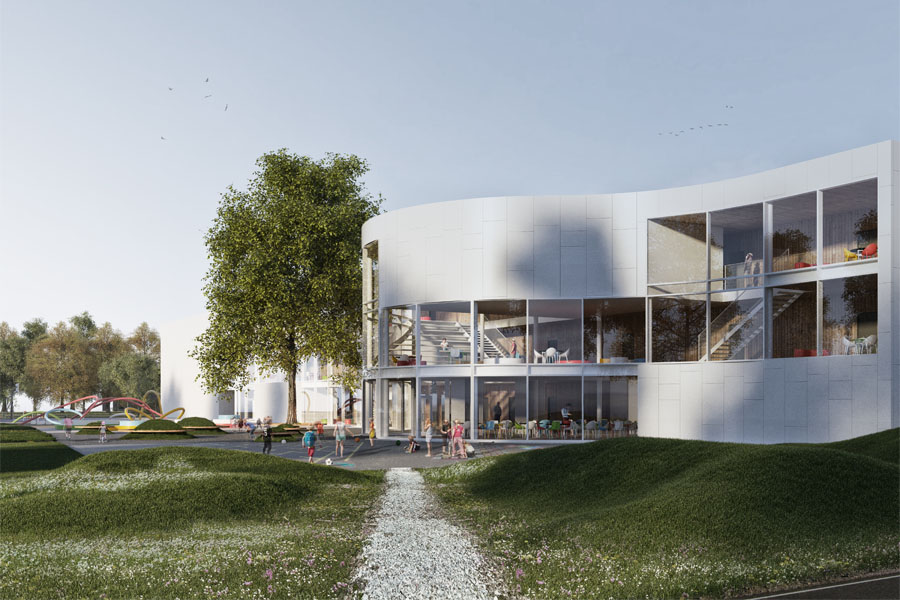
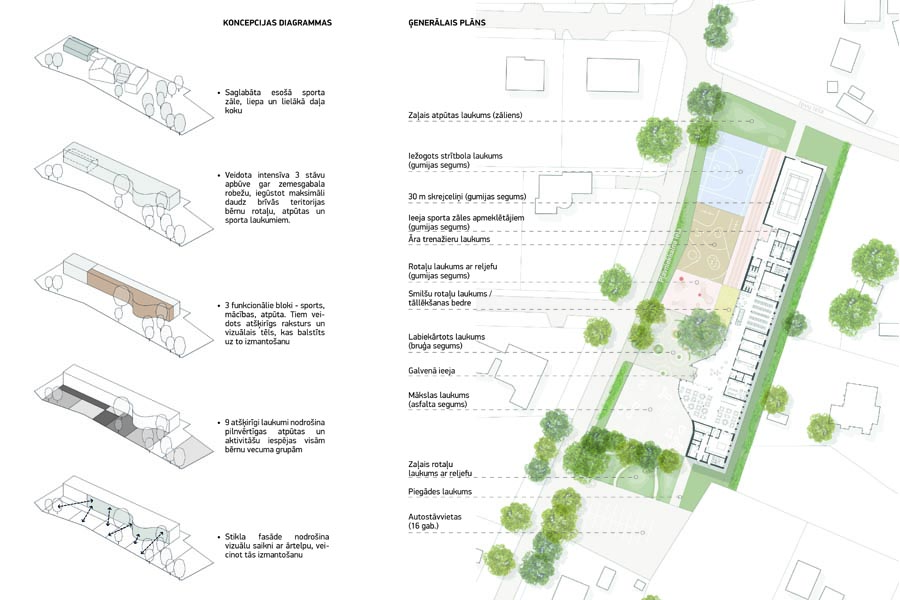
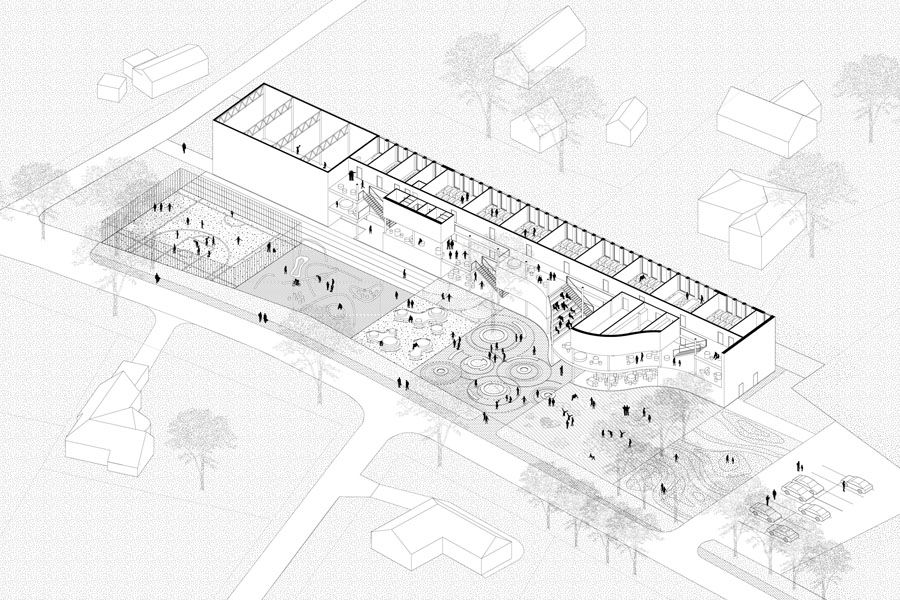
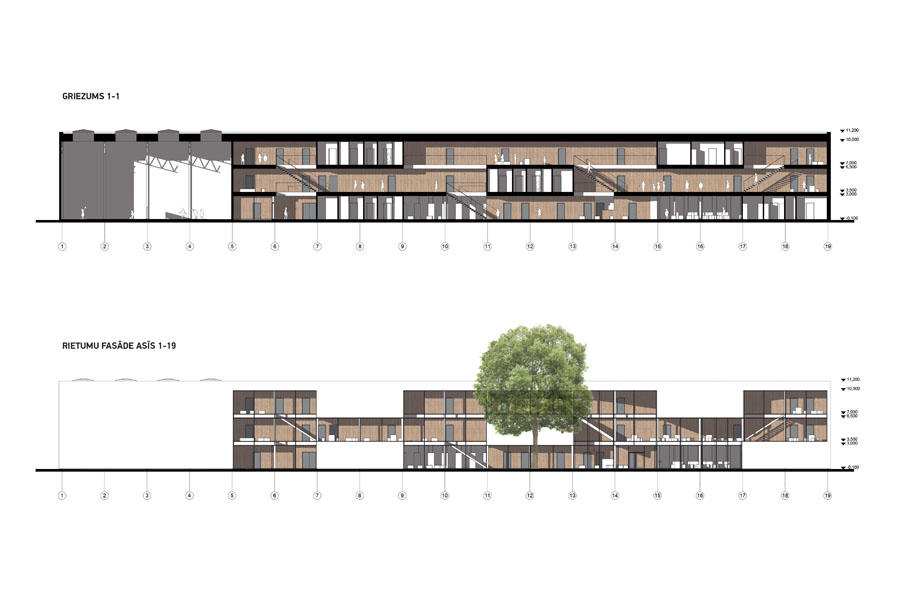
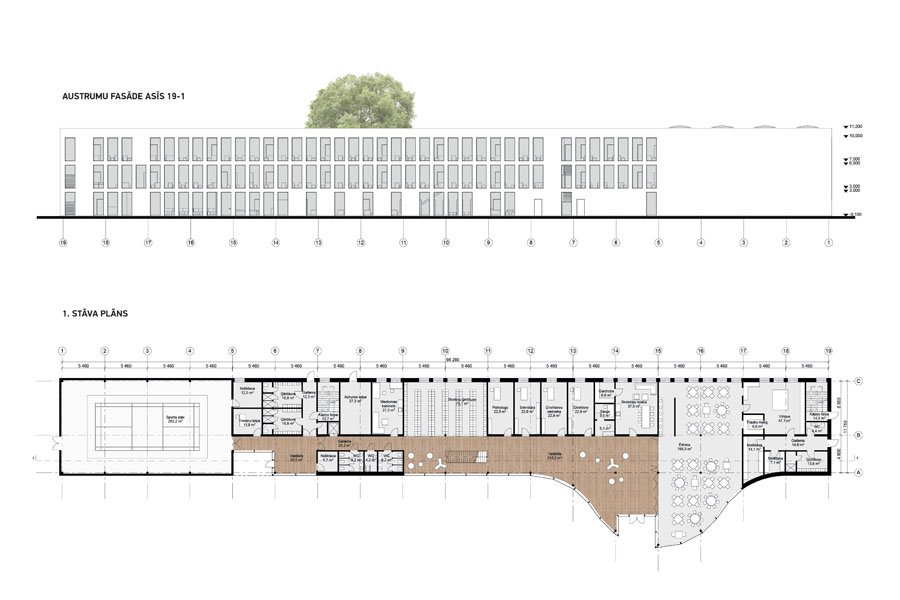
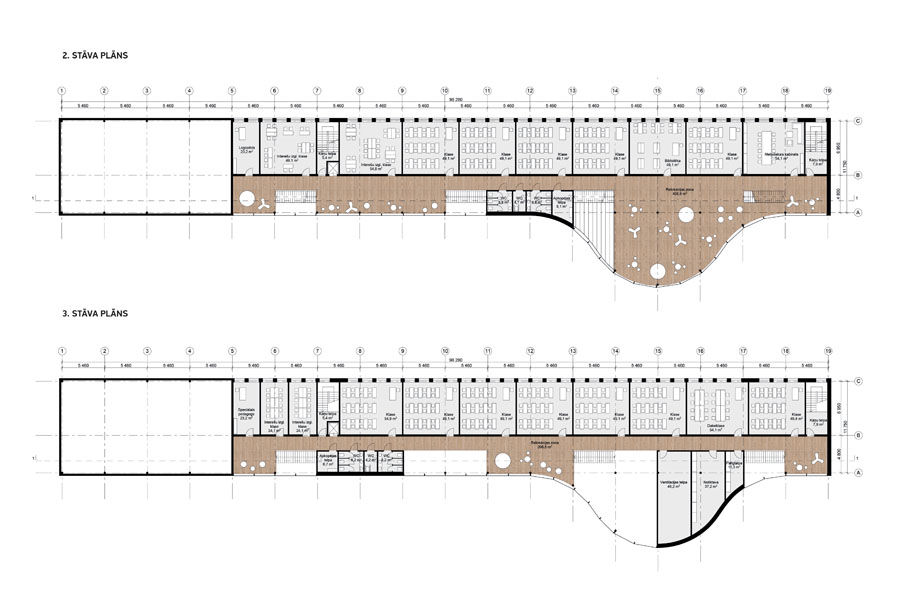
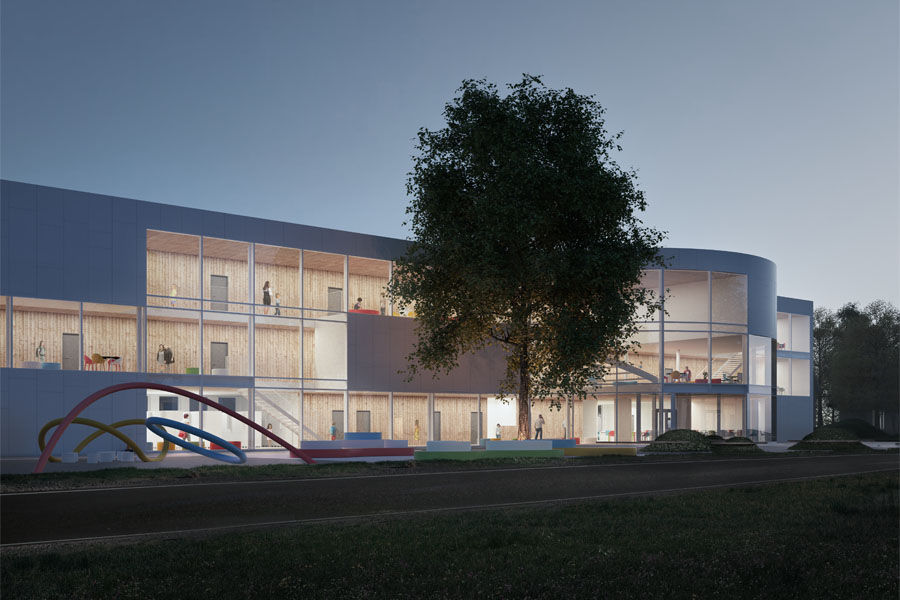
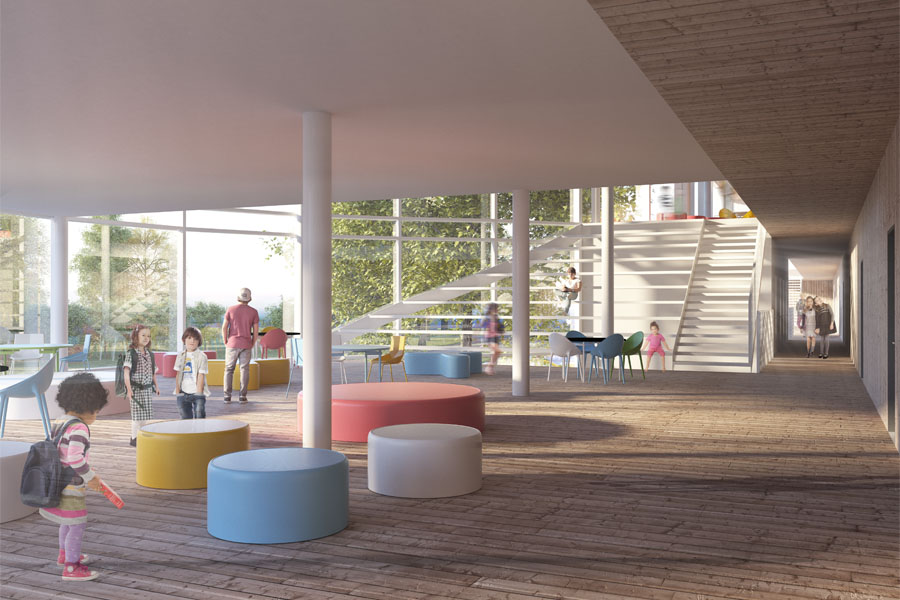
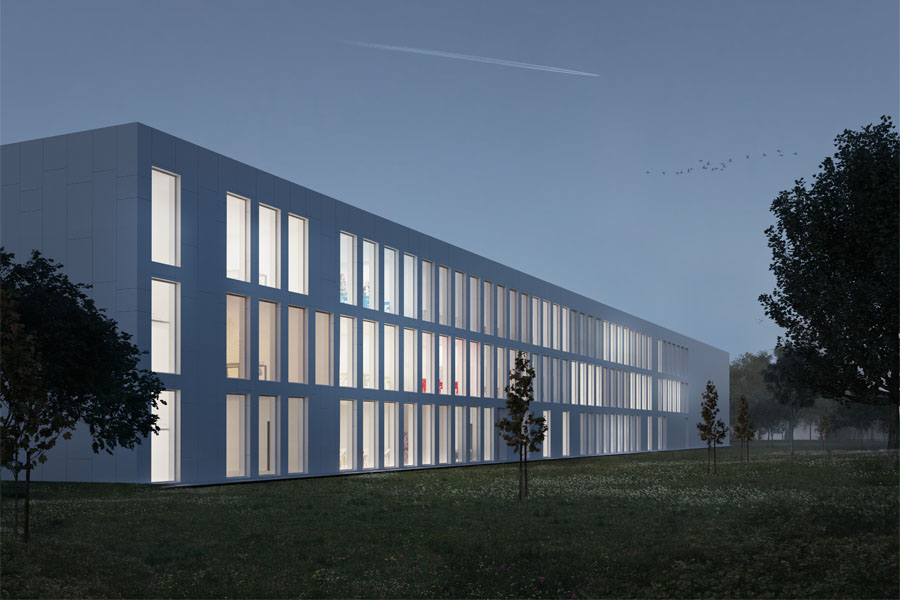
The project aims to create vibrant, inviting and playful school environment that promotes joy of learning, mutual socialization of students and use of public exterior space. To achieve this, we propose to demolish old school building, retain existing trees and sports hall and create new compact 3-storey school building along the land border, leaving a maximum amount of free children's play areas, recreation and sports grounds. Building height 11.2 m complies with existing building regulations - permitted maximum height is 12 m.
The building consists of three functionally different blocks - sports, learning and recreation. Each of them has a different character and image based on their usage.
Sports block remains in its existing place. Columns and floor is kept, roof is raised and made flat. In this way more varied usage of sports hall is achieved. Old facade cladding is replaced and fully integrated in the new volume of school
Learning facilities are located along on the east side of the land border, providing optimal room insolation. Learning block façade is made systematic and regular, reflecting the premises of the ongoing learning process.
Recreation block is organized on the street facade along the exterior landscape. It goes through all three floors of the building, functionally and visually connecting them with stairs and atriums. Concentrated student rest areas are formed on the landings of the stairs. The heart of the building is a multifunctional stairs, which is located in the central part above the entrance. It serves as a place where various events can be organized. The building layout allows complete elimination of corridors - a spacious unified area is made, where students have the opportunity to meet each other and make new friends. Staircase and atrium system provides constant circulation of students between floors and seating areas, promoting physical activity and bringing vitality in the building. Visual image of the recreation block as opposed to learning block is created playful and dynamic. For Interior finishing are used wooden planks, it gives cosiness, as well as creates a visual contrast with the exterior. The glass facade provides a visual link with the outside space, encouraging its usage.
Recreational exterior landscape is designed as a dense system of multi-purpose spaces, making maximum use of the entire site land area. 9 different areas provide wholesome recreational activities for all children age groups. Interconnected areas ensure undisturbed and unlimited movement of students between them, promoting physical activities, as well as allowing to use areas in a variety of creative ways. Parking and delivery areas are located as far as possible from the building's main facade. Parking is visually separated from recreational landscape by a row of trees.
Authors: Maris Bardins and Didzis Jaunzems Architecture (DJA)






